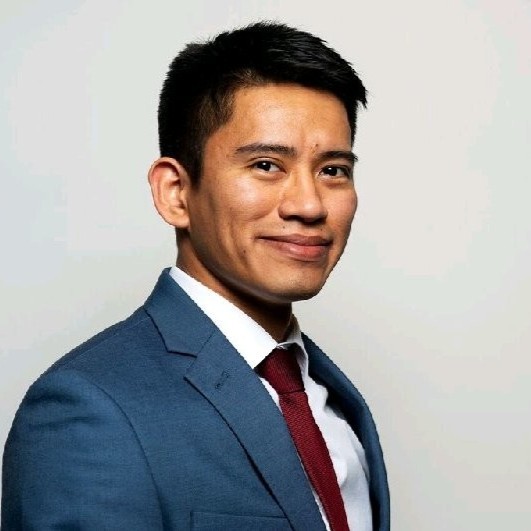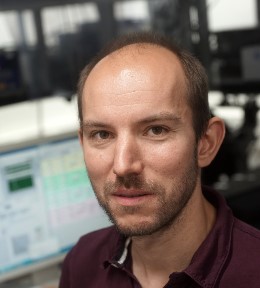Partners & Staff





The Fraunhofer IOF is a pioneer in the field of applied research for optical quantum technologies and offers innovative solutions for applications in science and industry where quantum-technological systems have the potential to enable revolutionary applications, e.g., reliable quantum communication, low-noise quantum imaging, and advanced ion traps for quantum computers. For this purpose, optical systems are integrated, miniaturized, and optimized, whereby the competencies of the institute cover the entire quantum photonic process chain from modeling to system production – from basic physics to ready-to-use prototypes.
Depending on the area of application, the Fraunhofer IOF offers individual optical solutions. In the area of quantum communication, this ranges from space-capable high-performance sources for entangled photons to complete photonic system solutions based on adaptive optics to lightweight telescopes for space and ground systems.
In this context, the Fraunhofer IOF develops high-performance sources for photon pairs with the broadest possible wavelength spread and wavelengths from the infrared to the ultraviolet range. The system solutions open up new fields of application in low-light imaging as well as previously unexplored wavelength ranges and expand the portfolio of microscopic and telescopic imaging methods.
The Quantum Photonics Research Group of the IOF heads the Fraunhofer flagship project QUILT for quantum imaging and is one the founding members of the Thuringian Center for Quantum Optics and Sensors – InQuoSens.
Key Staff
 Dr. Stephanie Hesse-Ertelt is Fraunhofer Research Manager, coordinator of publicly funded large-scale research projects & strategic initiatives as well as deputy head of department ›Strategy, Organization, Communication‹ at Fraunhofer IOF. Her research background focuses on microscopic & spectroscopic techniques with quantum physical aspects. She received her diploma in ›Optics and Quantum Electronics‹ from the Friedrich-Schiller-Universität Jena, did her PhD on an interdisciplinary topic and researched, among others, at the Center of Excellence for Polysaccharide Research Jena-Rudolstadt and the FFPRI in Tsukuba/Japan. Together with the Project Manager, Dr. Hesse-Ertelt manages the core tasks of the EU project to ensure the quality of FastGhost.
Dr. Stephanie Hesse-Ertelt is Fraunhofer Research Manager, coordinator of publicly funded large-scale research projects & strategic initiatives as well as deputy head of department ›Strategy, Organization, Communication‹ at Fraunhofer IOF. Her research background focuses on microscopic & spectroscopic techniques with quantum physical aspects. She received her diploma in ›Optics and Quantum Electronics‹ from the Friedrich-Schiller-Universität Jena, did her PhD on an interdisciplinary topic and researched, among others, at the Center of Excellence for Polysaccharide Research Jena-Rudolstadt and the FFPRI in Tsukuba/Japan. Together with the Project Manager, Dr. Hesse-Ertelt manages the core tasks of the EU project to ensure the quality of FastGhost.
 Josué R. León Torres is a PhD student at the Fraunhofer IOF within the ›Quantum Enhanced Imaging‹ group. After his Master thesis on waveguide-based photon pair sources, he turned towards quantum imaging. In his PhD, he focusses on applying quantum-imaging techniques for the biomedical sector utilizing the mid-IR spectral range. In doing so, he considers quantum ghost imaging as well as imaging with undetected light.
Josué R. León Torres is a PhD student at the Fraunhofer IOF within the ›Quantum Enhanced Imaging‹ group. After his Master thesis on waveguide-based photon pair sources, he turned towards quantum imaging. In his PhD, he focusses on applying quantum-imaging techniques for the biomedical sector utilizing the mid-IR spectral range. In doing so, he considers quantum ghost imaging as well as imaging with undetected light. Prof. Dr. Markus Gräfe has been the research group leader of the ›Quantum Enhanced Imaging‹ group at Fraunhofer IOF (2017-2022) and Project Manager of FastGhost. His research background is integrated quantum photonics and quantum walks of correlated photon pairs. He currently focusses on applying non-classical state of light for imaging, spectroscopy, and sensing applications. He addresses both, fundamental aspects and exploitation in the field. Dr. Gräfe published 29 papers in peer-reviewed journals (incl. 11in the Nature Publishing Group), with an h-factor of 19 (GoogleScholar). In his group, he supervises(d) one post-doc, six PhD students, eight Master students and one Bachelor student. Dr. Gräfe was appointed to the Technical University in Darmstadt and has been a Professor for »Experimental Solid State Quantum Optics« since October 2022.
Prof. Dr. Markus Gräfe has been the research group leader of the ›Quantum Enhanced Imaging‹ group at Fraunhofer IOF (2017-2022) and Project Manager of FastGhost. His research background is integrated quantum photonics and quantum walks of correlated photon pairs. He currently focusses on applying non-classical state of light for imaging, spectroscopy, and sensing applications. He addresses both, fundamental aspects and exploitation in the field. Dr. Gräfe published 29 papers in peer-reviewed journals (incl. 11in the Nature Publishing Group), with an h-factor of 19 (GoogleScholar). In his group, he supervises(d) one post-doc, six PhD students, eight Master students and one Bachelor student. Dr. Gräfe was appointed to the Technical University in Darmstadt and has been a Professor for »Experimental Solid State Quantum Optics« since October 2022.ACP’s research covers fundamental and applied topics and generates more than 450 publications annually in international peer reviewed journals. The main aim, however, is to achieve synergy effects between the research institutes of the ACP, their industrial partners, and their numerous international collaborators in order to enable scientific and economic added-value.
Key Staff
 Dr. Frank Setzpfandt (research group leader) received his diploma in physics and Dr. rer. nat. (PhD) from the Friedrich-Schiller-Universität (FSU) Jena in 2006 and 2012, respectively. He did a PostDoc with the FSU Jena and the Australian National University in Canberra before setting up an independent research group within the Nano Optics group at the Institute of Applied Physics in 2016. Frank Setzpfandt is doing research in nonlinear optics, integrated optics, nanophotonics and quantum optics. In particular, he is interested in the development of novel quantum imaging and sensing schemes, like quantum ghost imaging, and their application. He currently is the PI of several research projects on these topics funded by the European Union, German Ministry of Education and Research, the German Academic Exchange Service and the German Research Foundation. Dr. Setzpfandt has authored more than 50 publications in peer-reviewed journals, 20 invited talks and more than 100 contributions to international conferences.
Dr. Frank Setzpfandt (research group leader) received his diploma in physics and Dr. rer. nat. (PhD) from the Friedrich-Schiller-Universität (FSU) Jena in 2006 and 2012, respectively. He did a PostDoc with the FSU Jena and the Australian National University in Canberra before setting up an independent research group within the Nano Optics group at the Institute of Applied Physics in 2016. Frank Setzpfandt is doing research in nonlinear optics, integrated optics, nanophotonics and quantum optics. In particular, he is interested in the development of novel quantum imaging and sensing schemes, like quantum ghost imaging, and their application. He currently is the PI of several research projects on these topics funded by the European Union, German Ministry of Education and Research, the German Academic Exchange Service and the German Research Foundation. Dr. Setzpfandt has authored more than 50 publications in peer-reviewed journals, 20 invited talks and more than 100 contributions to international conferences.Single Quantum is the market leader in the emerging field of superconducting single photon detectors. The company was founded in 2012 as a spin-off from the Technical University of Delft: a positive example of excellence in science can be translated into a successful business.
Single Quantum develops, builds, and markets single-photon detection systems based on superconducting nanowires. Since its beginning, the company has built an impressive track record in entrepreneurship, high-quality manufacturing, innovation, and engineering. Single quantum photon detection systems are being installed in universities, research institutes, and industrial research laboratories around the world.
A strong market is pulling for this emerging technology, which is reflected in continuously growing turnover that more than doubled every year since 2013. Accordingly, Single Quantum expands its team with highly specialized employees and invests in technical equipment and production facilities. To accelerate further growth, Single Quantum was awarded the prestigious Phase 2 grant for SME instruments by the European Commission, which supports disruptive innovations in small businesses with significant growth potential and global ambitions.
In addition, Single Quantum participates in the Quantum Flagship, an initiative of the European Commission to promote quantum technology and implement its application in society.
The Fondazione Bruno Kessler (FBK) is located in Trentino, a province in northern Italy that is subject to a special statute of autonomy. The aim of the foundation is scientific excellence as well as innovation and technology transfer to companies and public services. The FBK, formerly known as Istituto Trentino di Cultura, was founded in 1962 by the Autonomous Province of Trento. To date, the company carries out studies mainly in the fields of information technology, materials, and microsystems and, thanks to a close network of alliances and collaborations, also carries out theoretical nuclear physics, networking, and telecommunications as well as studies on the effectiveness of public policy.
The KTH Royal Institute of Technology (KTH) is Sweden’s largest and oldest technical university. It plays a central role in Swedish research and is active in a large number of European and international collaborations. KTH has a state-of-the-art clean room for nanofabrication, device processing and characterization, featuring a new electron beam lithography system, thin film deposition and evaporation facilities, and etching systems.
In particular a dedicated sputtering system for NbTiN and NbN can provide very high quality thin films for the fabrication of superconducting detectors. The KTH quantum optics laboratory consists of six experimental setups built around four cryostats. In particular, a Bluefors dilution cryostat enables optical measurements down to 10 mK and an attocube system with a photonic probe station specially designed for long term measurements with high stability.

Our experimental setups are complemented with tunable cw lasers, two wavelength and pulse length tunable OPO lasers addressing the relevant wavelength regions (80 MHz and 320 MHz), self-built low-loss transmission spectrometers, and NIR and IR superconducting single photon detectors. We also have several experimental setups for Tc measurements and for testing superconducting single photon detectors.
Key Staff


